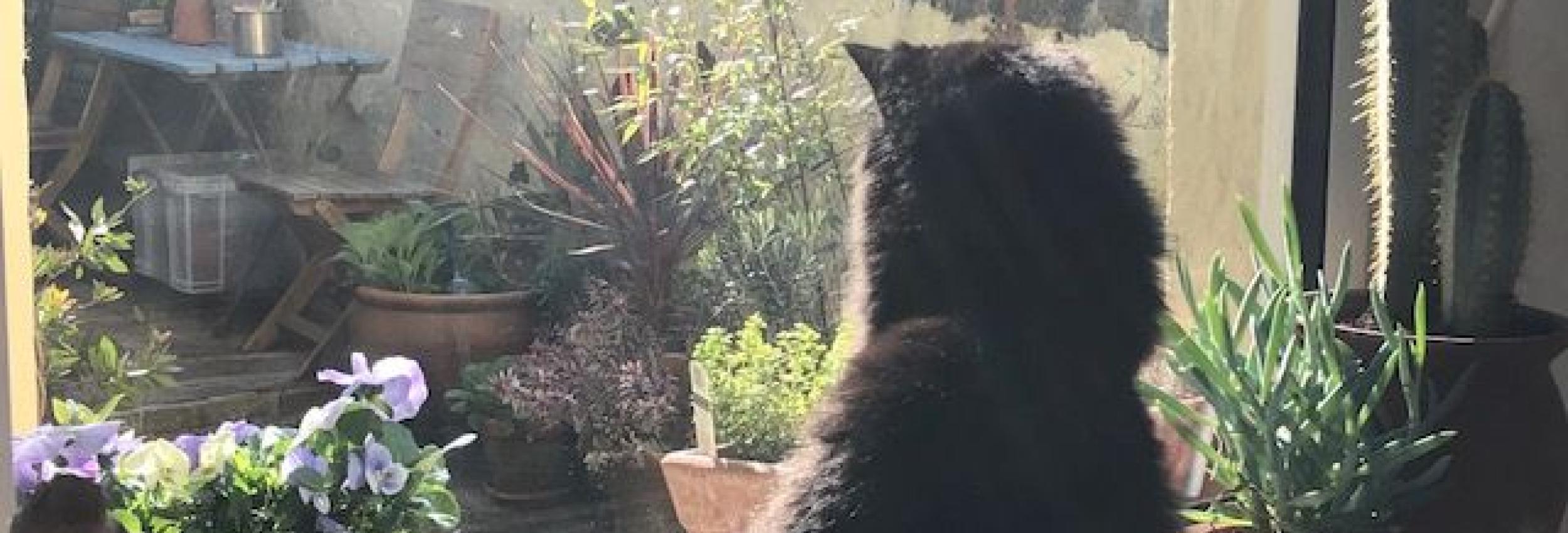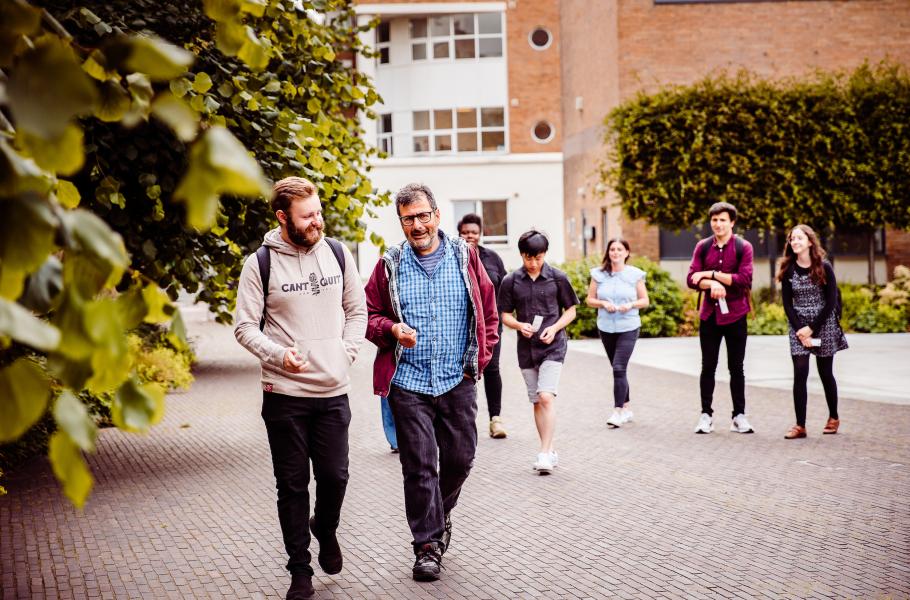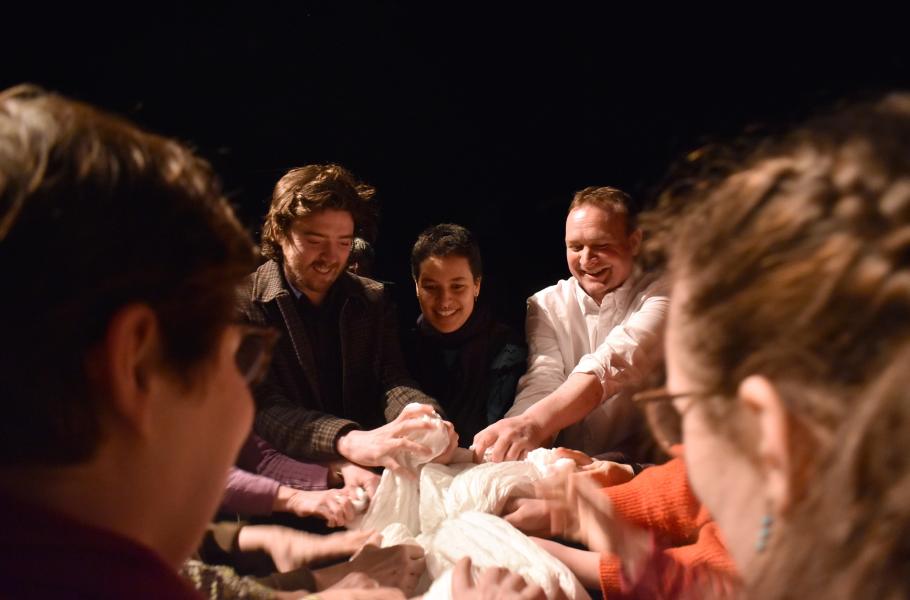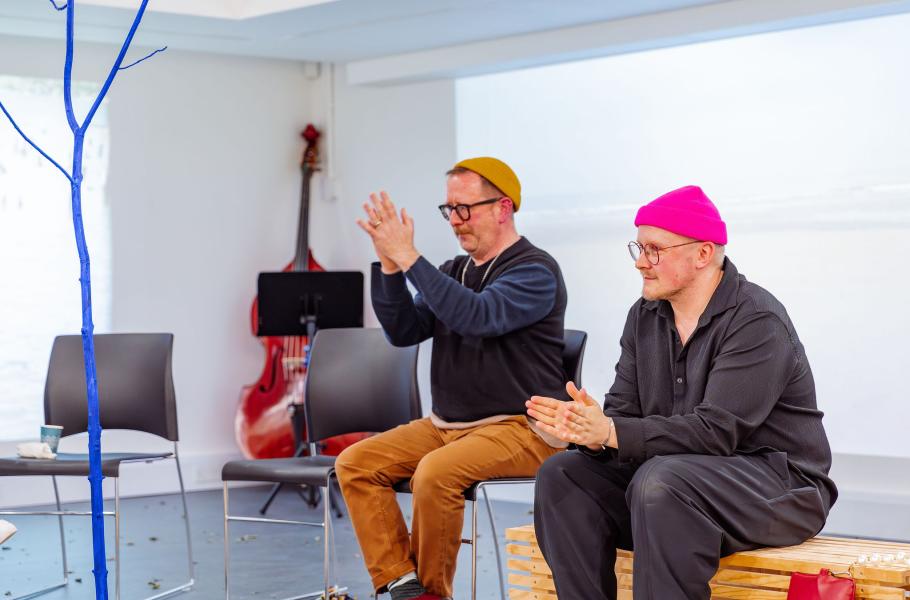Taking a Pause
Looking out of my window I see that distraction itself is now a constant dynamic, be this noticing the increased bird life enjoying the spring in my yard or the endless stream of work demands or even the glut of streaming cultural content. But I also see that I rarely give myself the luxury of taking a pause and like many, I find out what I think through writing. It is a daunting journey ahead.
I stumbled online upon this image by Dr Susan A. David (Harvard Medical School) that offers an alternative to Maslow’s Hierarchy of Needs, particularly resonant now.

“We may not be able to go outside, but we can go inside.” My current state is frequently not even at the gentle acceptance stage yet, but below that, still hovering in the disbelief stage (with a modicum of rage).
At the risk of stating the obvious, this is a unique and extraordinary global moment; it could not be more uncertain or fearful with no idea of the future and what everyday life might look like or feel like after this. All the more important to find moments of pause, of breathing space.
When I can lift my head and heart away from the daily onslaught of tragedies, it also feels to me like a once-in-a-lifetime opportunity to re-imagine what it is that the arts can offer in the transition to whatever is next, what some are calling a ‘new normal’. It is hard to be helpless and it can feel like this in the arts and cultural sector right now. It is so shocking and sudden that this longer-term thinking is almost impossible to contemplate; it’s enough to be dwelling on how to just get through the week. And absorbing our collective grief and shock. And there is a lot to read…
Francois Matarasso in his blog What Future for Theatres? writes:
“The cultural sector will need all its creativity to imagine new ways of connecting with the rest of us in a world of social distance.”
No pressure then. As the arts world grapples with survival and hard operational decisions, I suspect the more fundamental activity will be to really take on board this seismic event, however hard this is and start to imagine alternate scenarios for our collective futures. We must give ourselves the space and time to do this, and, importantly, alongside others. It will be a long haul and at the end of it, we will all be in a profoundly different place. It’s hard not to panic, not to jump into quick but short term solutions. Living with this degree of uncertainty is insane.
David Jubb in his blog, Time to Change nails it with:
“But despite hardship for collaborators and friends, we should not shy away from conversations about how we adapt and change. Because if we do not have these conversations openly now; then the long-term future of the sector might simply be about those with the deepest pockets and those, in this moment, who the government chooses to support.”
Soon we will be in a kind of transition phase. Many, such as Matthew Taylor’s recent blog at the RSA have identified the coming months of post-lockdown as a transition time. It is likely that this transition will be a substantial period of time. This presents an opportunity for reassessing values; for exploring how our values surface in this time of enforced isolation. What are the principles we will draw upon in this transition time? Francois Matarasso in his blog – What are we saving and why? also references this transition time and the importance of renewing our relationships with our audiences and participants. And many are asking what the creative sector role is with people in communities right now. Just have a peek at what is happening in Holbeck in Leeds.
It is down to us; we cannot wait for others to do this scenario-building for us, be they funders or cultural policy makers. It is a chance to test ways of thinking and acting. It is also a way of finding others to test this with, of finding answers through the creative work with others. Artists can and will document the time, respond to it and find joyful distractions, but there is also a huge role for enabling artistic work to point to ways forward. Letting the work do it.
The value of the arts, for me, has always rested on live and direct contact between people and this has now evaporated. The usual expectations of how art reaches into our lives will change. Within our limitations, what are the possibilities? How can we, as citizens, contribute to our new realities? How can we, as artists, contribute in a meaningful way, especially as our work for the most part, is dependent predominantly upon a live experience? How do these changes affect how we create our work? It can’t all be about the digital. Where is our relevance in the new world to come? How can we find new ways of working? How do we support each other through our work? How can we help to connect disconnected people? Enough questions! Suffice to say that this is an opportunity for reassessing values; for exploring how our values surface in this time of enforced isolation. What are the principles we will draw upon in this transition time? We will all think differently about each other and what is important to us.
In another online stumble, I’ve come across a stimulating online debate. In a poetic blog, The Forgotten Art of Assembly, American theatre artist, Nicolas Berger points out that our desire to gather together is one of the things being attacked by the coronavirus. He stresses the importance of mourning the temporary loss of an art form that demands assembly, to pause and recognise that this pause is fundamental in order to create what is to come.
‘We must lean into this pain. We must feel the grief. We must mourn. Mourn the loss of work, the loss of jobs, the loss of money, the loss of life. Mourn the temporary loss of an art form that demands assembly. Lean into the grief. Lean in. Lean in. Lean in. We must remind ourselves that mourning is a human act, not a digital one. It is only in this acknowledgment that we will survive. The internet isn’t going to save us, we are. The fear and uncertainty we feel right now — while the industry that we’ve dedicated our lives to grinds to a halt — is real. We don’t have to pretend it isn’t and we don’t have to keep making. We can help healthcare workers and our fellow humans by staying home and we can honor the art form we love so deeply by pressing pause, not trying to reanimate it.’
Berger’s blog has prompted a response from Anna Caldwell urging us to remain actively in the creative zone and keep making:
‘Our fear of the future may motivate us to seek comfort in creating, but hasn’t this always been the case? We have different fears now, but we have always had fears, and we have always used art as a way to find meaning and understanding of those emotions.’
Be this transition period one of processing shock, of mourning or of making, this time is an opportunity to pause and take stock.
There are some wonderful reflective opportunities out there led by similar principles and questions. Have a look at FACT, Heart of Glass and Arts and Culture at the University of Exeter.
At Lancaster Arts, we are in the early stages of developing a programme called Breathing Space which will highlight this unique chance to take a pause, reflect and notice, look around us, reconsider our practices, our relationship to ourselves, others and to our communities, both on our streets and across the world.
More on Breathing Space shortly, but from behind my window to you behind yours, I wish you well. As Matarasso puts it so well: ‘take care of yourself and those around you, make kind, realistic demands on yourself and nurture your resources. We will all be needed soon enough.




